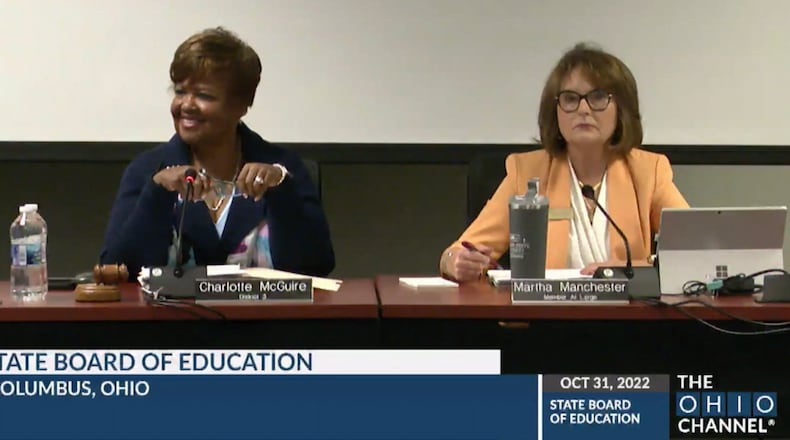Shannon Cox, superintendent of the Montgomery County Educational Service Center, said districts don’t know yet what exactly is going to change and how that might impact what they can teach. Districts get rated by ODE in part on how they do on state tests as well as other factors.
“Will accountability measures stay the same?” Cox said. “Will state testing stay the same? Or will all of that get revamped?”
The new director position was created in the latest Ohio budget bill, after legislators expressed frustration with the State Board of Education and the lack of a state superintendent of public instruction, a position that has mostly been held by an interim person since September 2021.
The director of education and workforce will soon be running the Ohio Department of Education, making decisions about what standards Ohio schools need to meet. The state school board will make decisions about licensing teachers and boundary changes for school districts.
But Cox reminded people that Ohio is a local control state, meaning local school boards have the final say in what is taught in classrooms, along with what books are used and who is hired to teach
What is changing at the Ohio state school board?
The state board of education is one of the largest school boards in the country, made up of 19 people, all of whom have an equal vote. Of the 19 members, 11 are elected by Ohioans and eight are appointed by the governor. The Ohio constitution requires that the state have a school board that selects the superintendent.
Although state school board elections are not partisan, the board often has political squabbles. A majority of the current members are Republicans.
According to the National Association of State Boards of Education, only Pennsylvania has a larger board than Ohio, with 21 voting members and four non-voting members.
State Senator Andrew Brenner, R-Delaware, one of the proponents of Senate Bill 1, which eventually turned into policy in the state budget, said the pandemic highlighted the need to shake things up. As with other states, Ohio’s reading and math scores have plunged since the pandemic and getting them back to where they were pre-pandemic has been a painful process.
Brenner noted the state school board sometimes struggles to make decisions. For example, the board has not been able to hire and retain a long-term superintendent, nearly two years after the last one stepped down.
In May 2022, the state board hired Steve Dackin as the state superintendent, but he resigned after only a few weeks on the job after controversy about how he was hired, with accusations of ethics violations.
The state superintendent before him, Paolo DeMaria, stepped down in September 2021 after five years on the job.
Even the previous interim superintendent, Stephanie Siddens, has left ODE and is now working for Upper Arlington schools near Columbus. The current interim superintendent is Chris Woolard.
Hopes and fears
Aaron Churchill, Ohio research director for the Fordham Institute, said he hopes the new director structure will make things more streamlined for schools.
“I think the new governor’s model can move policies quicker, the decisions can be made quicker with a clear chain of command between the governor and the director,” Churchill said.
Charlotte McGuire, the elected state school board representative from Centerville, who recently served as board president, said she worries about making sure people’s voices are heard.
Before the change, people could go to the public school board meetings in Columbus, held two days a month, and speak at a public forum. Those meetings will still be open to the public, but the school board will not be the people making policy.
“How will people get their voice heard about the desires and expectations for every unique child to succeed, thrive and flourish?” McGuire said.
Brenner argued that the state will still be making education rules through the Joint Committee on Agency Rule Review, a government organization that posts education rules and asks for comments from the public.
Brenner added he believes people are more likely to know the governor and their legislator than they are to know their state school board member.
The legislature will be taking a more active role in creating education law, but the state school board still has the authority to make recommendations to ODE.
“Now, that being said, the state school board still exists and even though their powers are gone from a standpoint of direct oversight, they’ve still got some authority for licensure and territory transfers, but it doesn’t mean that they still don’t have the ability to write resolutions and bring in the public,” Brenner said.
About the Author

